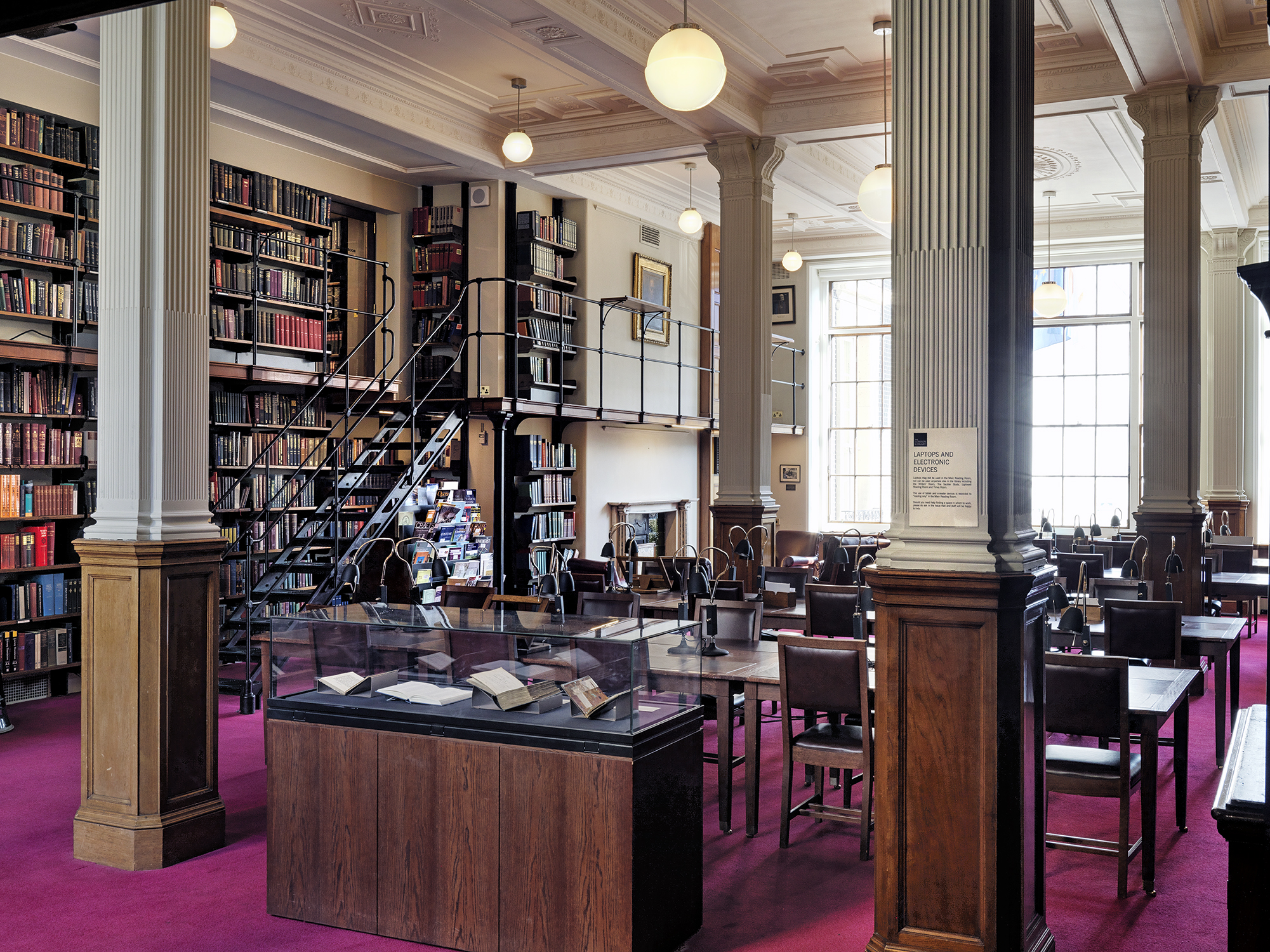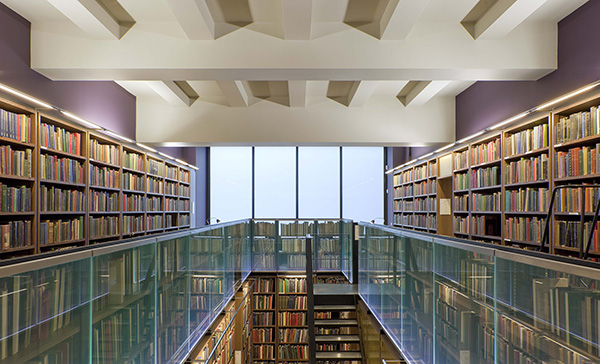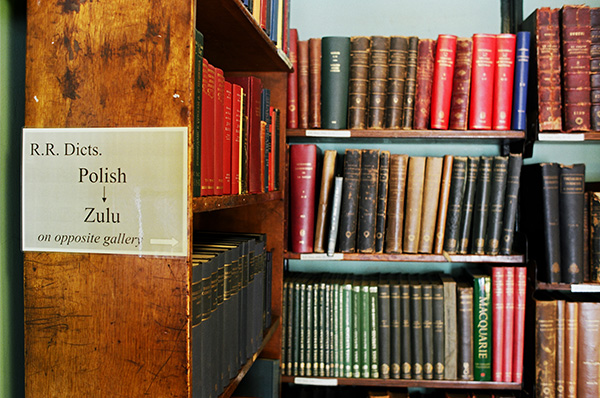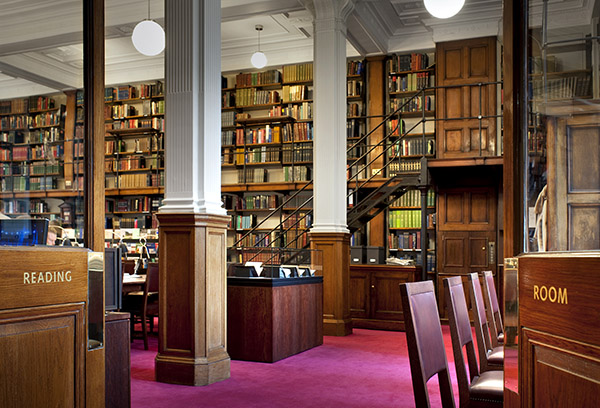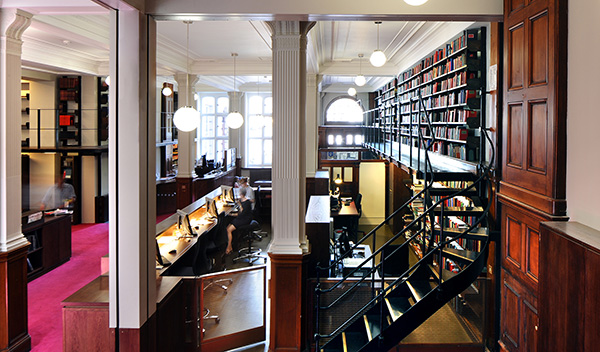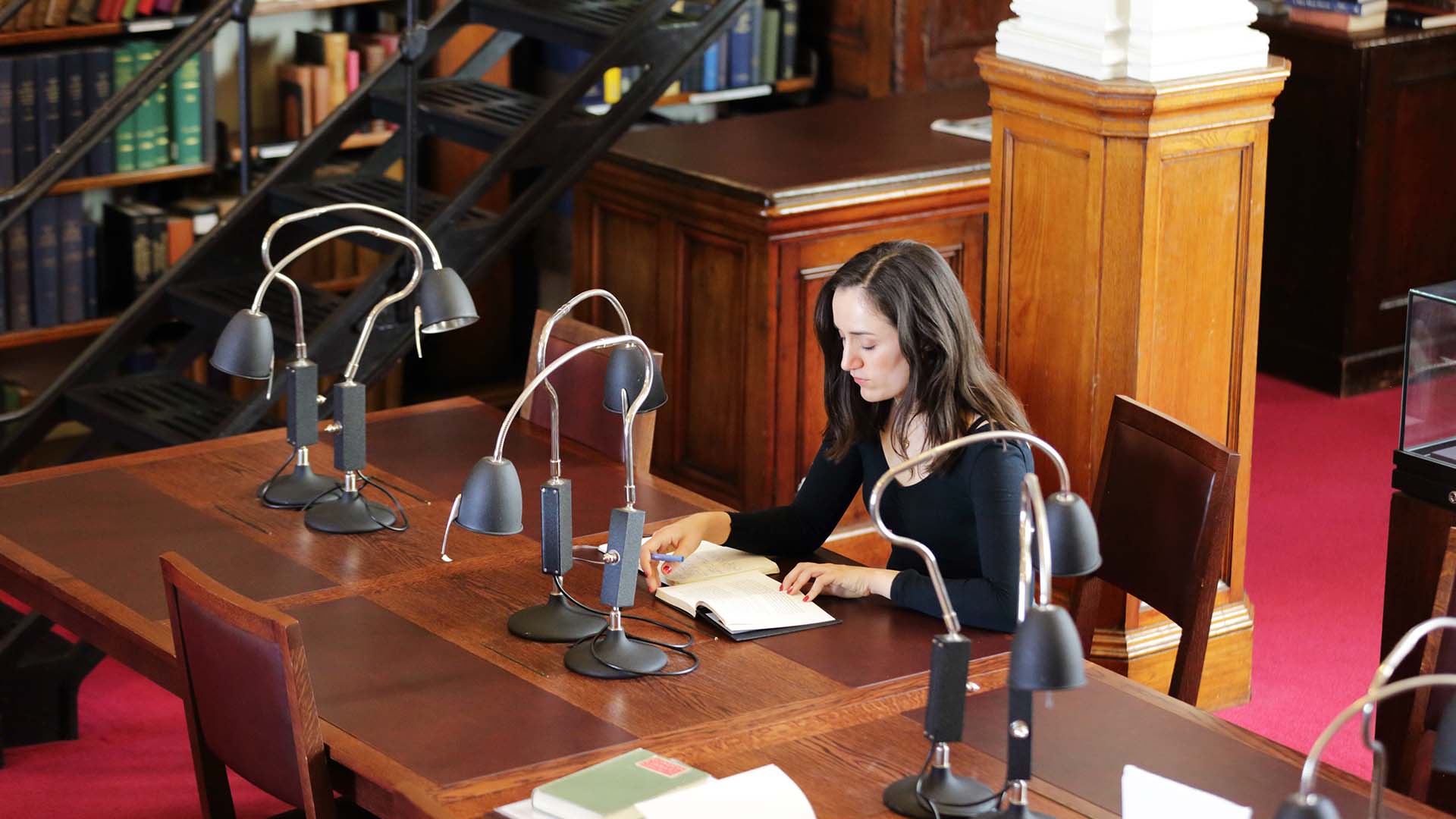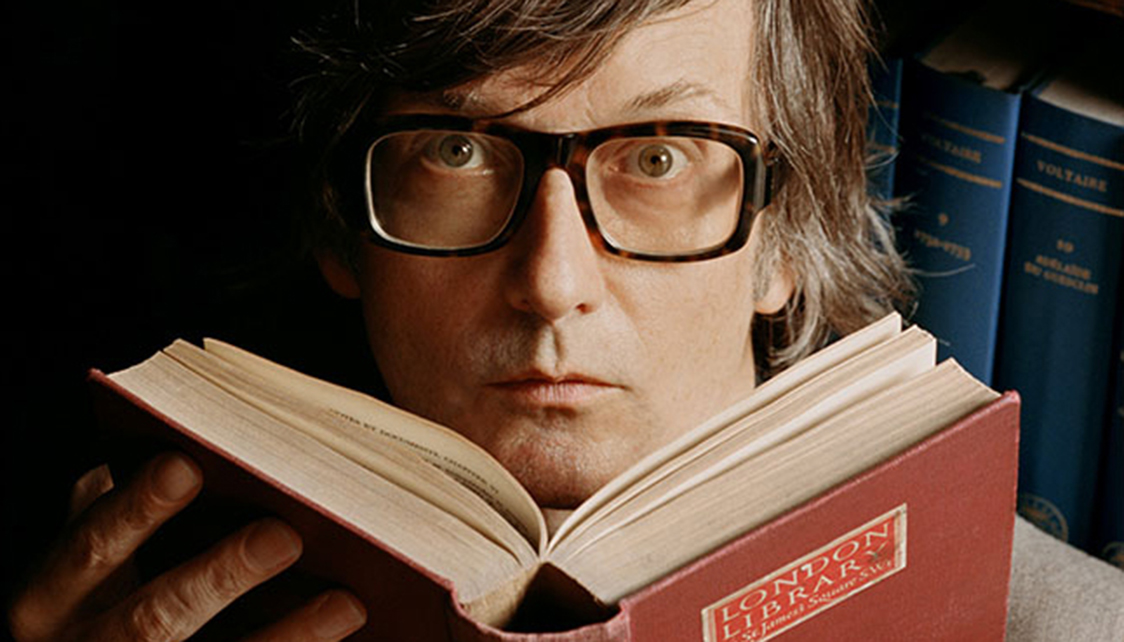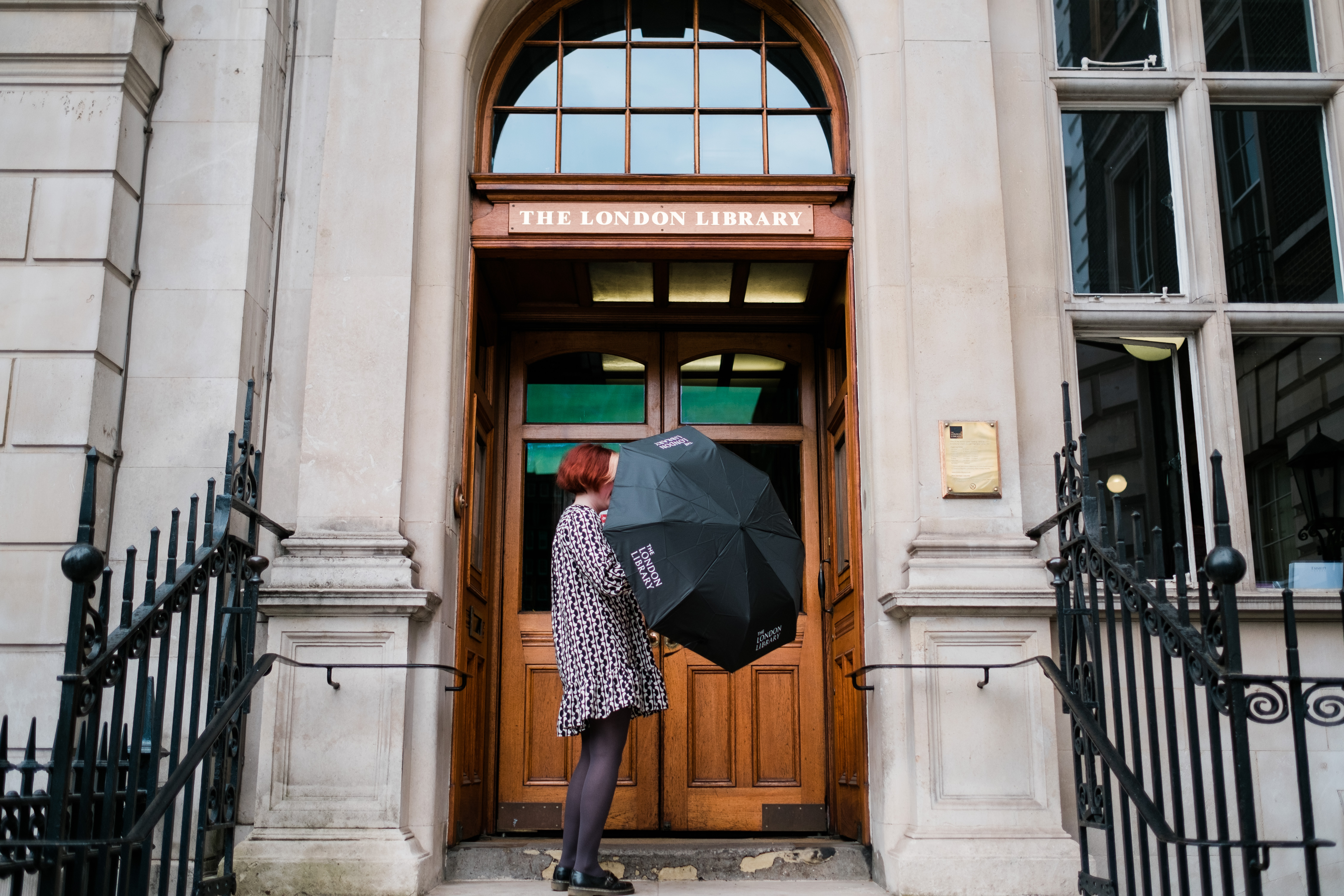 The 5th of December 1898 has a special place among lovers of the printed word as the day when The London Library first unveiled the amazing building in St James’s Square that we recognise today.
The 5th of December 1898 has a special place among lovers of the printed word as the day when The London Library first unveiled the amazing building in St James’s Square that we recognise today.
The Library (which was founded in 1841) had already been in existence for over 50 years, but it had long outgrown the unappealing Georgian freehold it occupied in St James’s Square and during the 1890s it had successfully raised money for a complete rebuild.
Overseen by President Sir Leslie Stephen (Virginia Woolf’s father) and by Charles Hagberg Wright, the Library’s Secretary and Librarian, work began in 1895 and within three years had seen “the worst house in the square” transformed into the striking building the Library occupies today, with its Portland stone façade (developed as a result of a special fundraising drive), spacious Issue Hall, elegant Reading Room and beloved iron grille floor bookstacks.
The design was the brainchild of architect James Osborne Smith and involved the construction of one of the first steel framed buildings  in London. In its cutting edge bookstacks it utilised the latest thinking about the use of steel flooring to achieve the optimum combination of space-saving and strength. The grille floor design was also implemented to aid ventilation – an aspiration which any contemporary user of the Backstacks can testify has not been realised!
in London. In its cutting edge bookstacks it utilised the latest thinking about the use of steel flooring to achieve the optimum combination of space-saving and strength. The grille floor design was also implemented to aid ventilation – an aspiration which any contemporary user of the Backstacks can testify has not been realised!
Work continued intensively for three years and Leslie Stephen – an early pioneer of Alpine mountain climbing - could regularly be found clambering up the scaffolding to monitor progress.
The opening ceremony was held in the new Reading Room on 5th December 1898. Among the attendees were The Bishop of London; Lord Wolseley (the Commander-in-Chief); Irish historian and political theorist Mr Lecky MP; and the Liberal statesman Robert Crewe-Milnes, 1st Earl of Crewe. Sir Leslie emphasised that the project “was not undertaken from any desire for bricks and mortar, nor with the view of adding to the beauties of London. It was undertaken because of dire necessity”. Quite simply, with a collection approaching 200,000 volumes, the Library had outgrown its premises and “it was necessary to either build or burst”.
 The new building immediately caught the public’s imagination. The Times reported that “The reading room which is some 50ft long and excellently lighted, is one of the finest of its kind in London, and the book exchange on the ground floor offers abundant room even for the rush of borrowers on a busy Saturday afternoon.… The iron book stacks, as American librarians call them …are planned to hold the largest possible number of volumes in the available space”.
The new building immediately caught the public’s imagination. The Times reported that “The reading room which is some 50ft long and excellently lighted, is one of the finest of its kind in London, and the book exchange on the ground floor offers abundant room even for the rush of borrowers on a busy Saturday afternoon.… The iron book stacks, as American librarians call them …are planned to hold the largest possible number of volumes in the available space”.
The Times also praised the new classification system which “reflected great credit on the librarian, Mr Hagberg Wright who has  carried it through”.
carried it through”.
They concluded: “The transformation is … far more satisfactory than could have been expected. The books, which formerly crammed passages, garrets, and pantries, have now found proper shelf-room in accessible places; the latest methods of arrangement approved by the Library Association have been put in practice; everything is readily under the reader’s hand; the reading room is excellent; and in a word, the London Library is properly housed”.
After three years of hard work – during which, remarkably, the Library closed its doors to members for just three weeks - Sir Leslie Stephen reported with evident relief that they were now emerging from the chaos that had surrounded them for the last few years and he felt sure the public would appreciate the convenience of the new building.
But one person missed out on the accolades. The architect James Osborne Smith did not feature at the opening ceremony and his contribution in developing one of the best-loved libraries in the world was overlooked. Something current users may reflect on as they continue to enjoy the unique building that he designed and that remains strikingly unchanged from the day it was first opened over a century ago.

